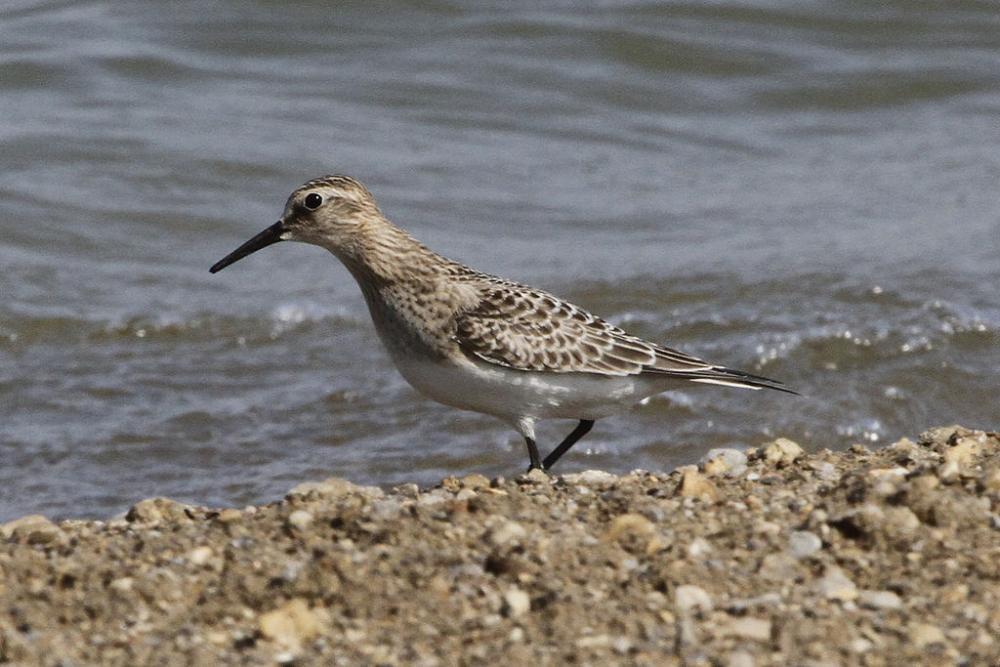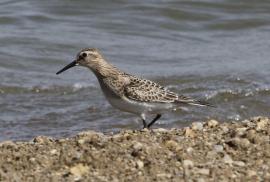Guide to Boreal Birds
Overview
Research shows that in the fall adult Baird's Sandpipers fly rapidly along a narrow route through the Great Plains of North America, while young birds migrate over a broad front, and regularly appear on both Pacific and Atlantic coasts. It is suspected that they may cover up to 4,000 miles (6,400 kilometers) nonstop. It was named in honor of Spencer Fullerton Baird (1823-1887), for many years Secretary of the Smithsonian Institution.
Description
7 1/2" (19 cm). A slender "peep" with a short straight bill; larger than Least, Semipalmated, and Western sandpipers; about the same size as White-rumped. Wing tips extend beyond end of tail, giving bird a "pointed" look behind. Breeding adults have buff tinge on face, splotchy pattern on upperparts. Juveniles have buff face and breast, bold white scaling on upperparts. White-rumped Sandpiper (Calidris fuscicollis), an Alaska breeder that migrates east of the Rockies, is similar but lacks scaly pattern above and has bold white rump.
Voice
A soft krrrrt; also a loud trill similar to that of other "peeps."
Nesting
4 tawny eggs, spotted with brown, in a dry depression on the ground, often among rocks.
Habitat
Breeds on tundra; frequents grassy pools, wet meadows, and lake and river shores on migration.
Range/Migration
Breeds in northern Alaska and Canadian Arctic. Migrates mainly through Great Plains and along Pacific Coast in fall, through Great Plains in spring. Regular in small numbers on East Coast in fall. Winters in South America.



